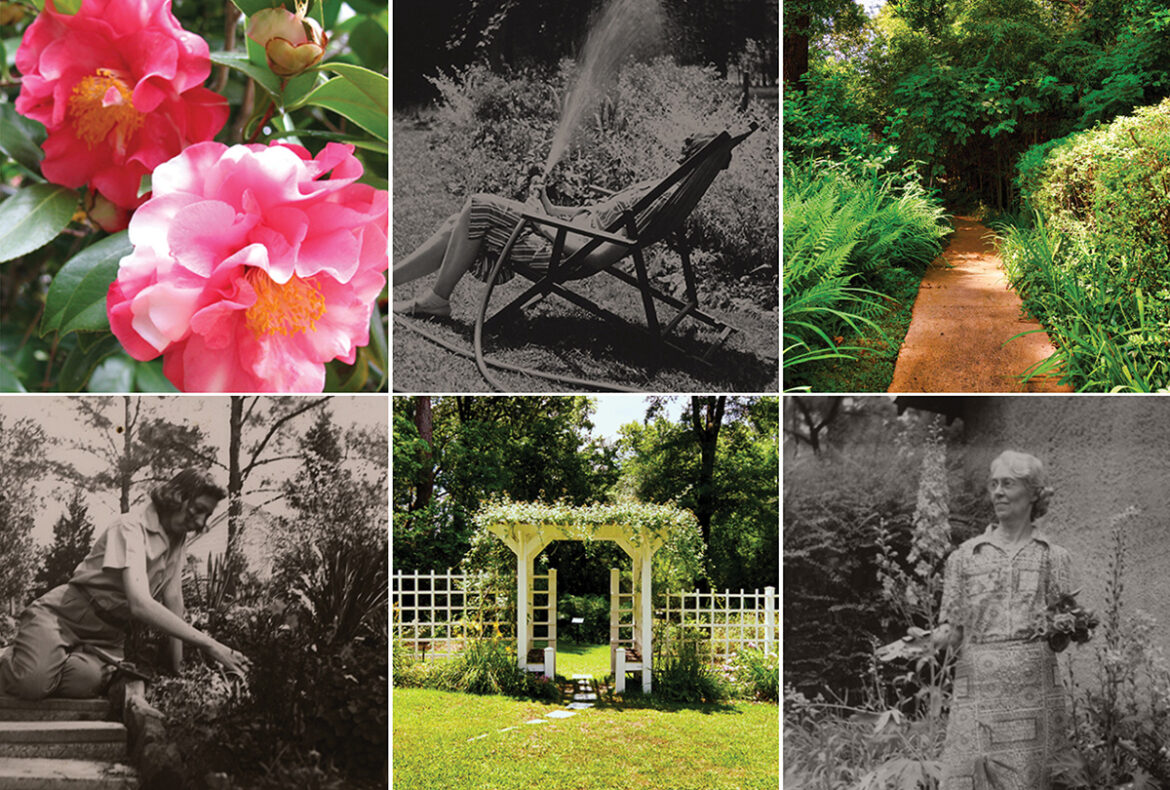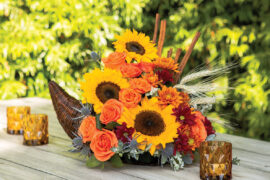Are you or your garden club looking for a fun day trip to visit beautiful gardens in our state? There is one garden within driving distance from the coast that you do not want to miss! It is Eudora Welty’s House and Garden in Jackson, Mississippi, and it is truly a monument to the Pulitzer Prize winning author. People travel from all over the world to see her gardens. She was an avid gardener. Welty and her mother, Chestina, designed the garden in 1925 and they enjoyed spending time together in the garden. In Welty’s writings, she mentions more than 150 types of plants and flowers.
Her house and garden were left to the state as she never married. It sits right next to Belhaven University. As I take students in my Creative Writing class each year for a visit, I always find something new to learn. Her garden has blooming flora all year long, yes, even during winter. You might want to check the website below for her “bloom” calendar that will tell you what is scheduled to be blooming during your visit! (welty.mdah.ms.gov). This website also gives you a calendar of special events and tour information such as times and days open for visits.
Much thought went into the process of creating her backyard landscape. The Welty garden has many plants and flowers that are not available in commercial nurseries. She has tea roses, climbing roses, daylilies, flowering shrubs, native plants and trees, and more than 30 varieties of Welty’s favorite flower, the camellia. Many of the camellias were planted or grafted by Welty herself. So, in November, I was able to take some students to her house and gardens and look for her beautiful camellias. We encountered the Leila Camellia that is white and huge; it is stunning! Her path to the garden playhouse is delightful! And, as you walk the path, you will meet a friendly cat named Sal who will accompany you!
Speaking of camellias, the Eudora Welty Garden is recognized as an official stop on the American Camellia Society Gulf Coast Camellia Trail. Her garden in Jackson is one of only two public botanical gardens in the state of Mississippi.
It was amazing to see the camellias growing in November. How can you make this happen in your garden? Winter blooming camellias are native to Japan. This is referenced in its botanical name Camellia Japonica. There are over 30,000 different types of winter blooming camellias. Camellias work well in our planting zones in south Mississippi.
The perfect place to grow camellias is under tall pine trees; they thrive where they get filtered bright light all year. You can also plant camellias where they get northern and eastern exposure with morning sun and afternoon shade. Camellias do well in the mild climate of the southeast because they are protected from the winter wind and sustained temperatures below 15F.
Do not overcrowd your camellias as they need breathing room to grow. Camellias can become large shrubs in ten years or so. Plan for them to grow about 10-12’ tall and 8-10’ wide. Be sure and find the perfect spot for them to grow.
Keep in mind that camellias like well-drained, acidic soil. They also do not like wet soil; therefore, you will see camellias planted on mounds or elevated. This is a great solution for gardens that stay wet or soggy year-round. A light layer of mulch from pine bark or pine straw will maintain soil moisture and reduce weeds. After established, water them only as needed. For example, water camellias if you are experiencing more than a week of temperatures above 90F with no rain. To keep camellias healthy, you may want to apply an organic acid-based fertilizer like Holly-Tone in early spring and mid fall.
When pruning camellias, always prune right after they bloom. That means you will not be removing any flower buds. You can protect your younger plants from natural pruning by animals like deer by enclosing the plants in a metal cage or using a repellant like I Must Garden. Check your camellias’ leaves occasionally for “scale” which is a pest and will colonize on the backside of the leaf. Yellow spots on the foliage could be an indication of the insects. The American Camellia Society website has information on all aspects of camellias including growing camellias, pruning camellias, and pesticide free ways to rid your flowers of scale and other pests.
Camellia Japonica (Japanese Camellia) is from the tea family. With so many varieties of camellias to choose from, you can keep your garden growing from August to May with these beauties (just to name a few): Miss Biloxi Camellia, Japonica Crimson Candles, Japonica October Affair, Japonica La Peppermint, Japonica Seafoam, and Japonica Royal Velvet.
Experiment and see which ones you love! More information can be found at the American Camellia Society website: americancamellias.com. Remember, camellias can add blooming color to any winter landscape! Happy Gardening!





